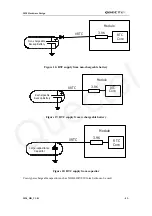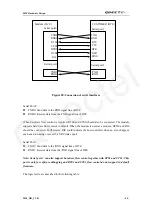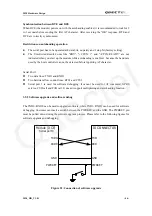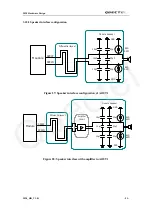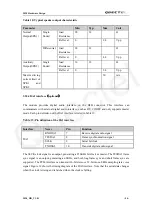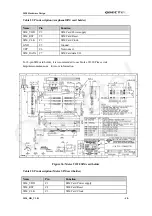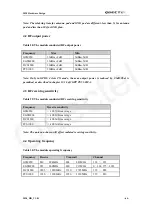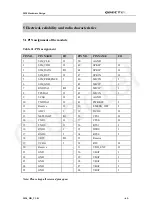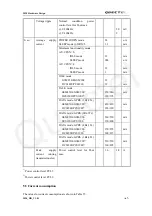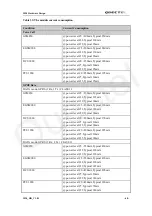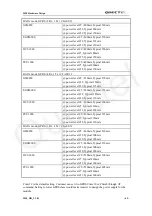
M20 Hardware Design
Figure 33 is the reference circuit for SIM interface, and here an 8-pin SIM card holder is used. In
order to offer good ESD protection, it is recommended to add TVS such as ST (www.st.com )
ESDA6V1W5 or ON SEMI (www.onsemi.com ) SMF05C. The 22
Ω
resistors should be added in
series between the module and the SIM card so as to suppress the EMI spurious transmission and
enhance the ESD protection. The SIM card peripheral circuit should be placed as close as possible
to the SIM card socket.
To avoid possible cross-talk from the SIM_CLK signal to the SIM_DATA signal be careful that
both lines are not placed closely next to each other. A useful approach is using the SIM_GND line
to shield the SIM_DATA line from the SIM_CLK line.
1K
VDD_EXT
Module
SMF05C
SIM_VDD
SIM_CLK
SIM_DATA
SIM_RST
SIM_PRESENCE
VCC GND
RST VPP
CLK I/O
22R
22R
22R
1uF
MOLEX-91228
SIM CARD
GND
100K
BB
GPIO
SIM_GND
Figure 33: Reference circuit of using 8-pin SIM card socket
In Figure 33, the pin SIM_PRESENCE is used to detect whether the tray of the Molex SIM socket,
which is used for holding SIM card, is present in the card socket. When the tray is inserted in the
socket, SIM_PRESENCE is at high level. Regardless of whether the SIM card is in the tray or not,
the change of SIM_PRESENCE level from low to high level inspires the module to reinitialize
SIM card. Customer’s application can use “AT+QSIMDET” to switch on or off the SIM card
detection function. For detail of this AT command, please refer to document [1].
If customer doesn’t need the SIM card detection function, keep SIM_PRESENCE open. The
reference circuit using a 6-pin SIM card socket illustrates as the following figure.
M20_HD_V1.01
- 56 -
Quectel

